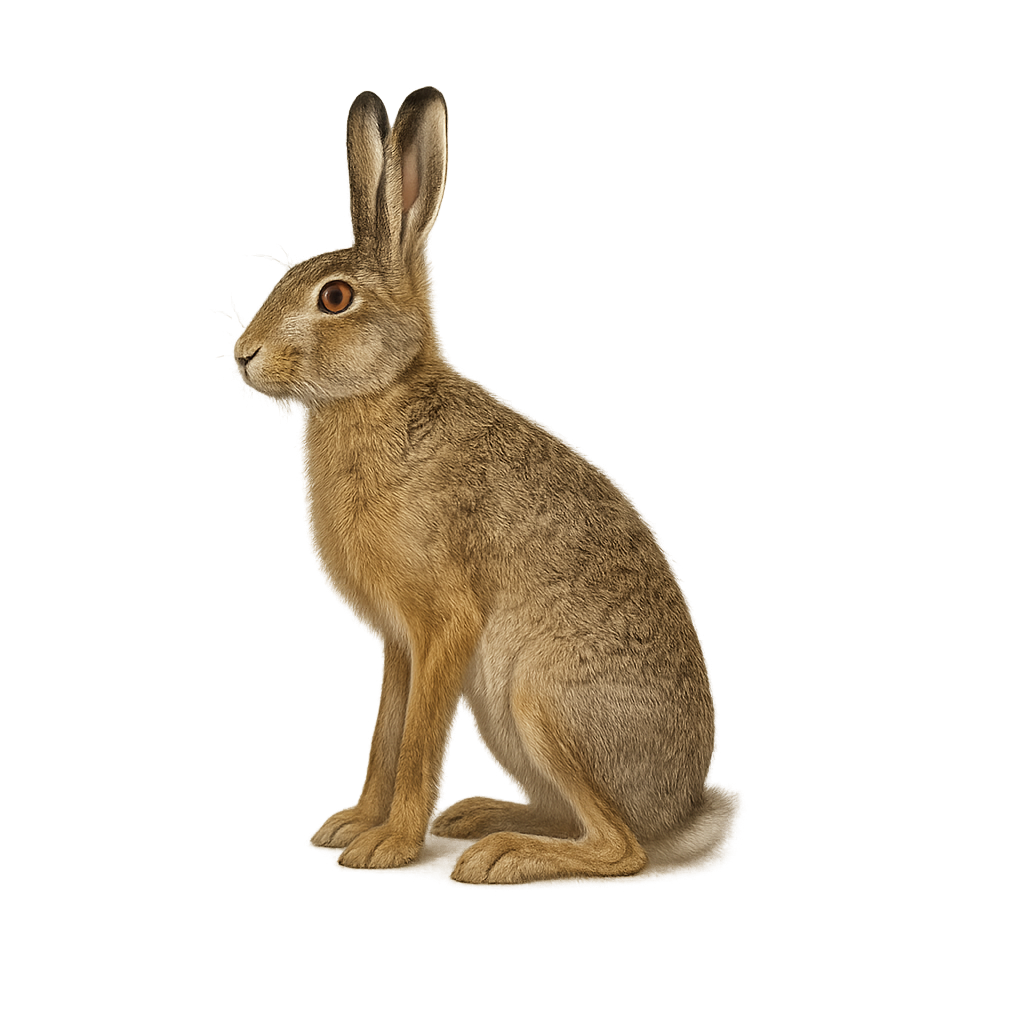Your wildlife photography guide.
Explore the european hare in detail, study its behavior, prepare your shots.
Where to observe and photograph the european hare in the wild
Learn where and when to spot the european hare in the wild, how to identify the species based on distinctive features, and what natural environments it inhabits. The WildlifePhotographer app offers tailored photography tips that reflect the european hare’s behavior, helping you capture better wildlife images. Explore the full species profile for key information including description, habitat, active periods, and approach techniques.
European hare
Scientific name: Lepus europaeus

IUCN Status: Least Concern
Family: LEPORIDAE
Group: Mammals
Sensitivity to human approach: Suspicious
Minimum approach distance: 30 m
Rut period: January to September
Gestation: 41-44 jours
Births: February to October
Habitat:
Meadows, farmland, and open areas
Activity period :
Mainly active at night, generally discreet during the day.
Identification and description:
The European Hare is a large herbivorous mammal, easily recognizable by its long ears and powerful hind legs. It measures about 50 to 70 cm in length, with a short tail and a wingspan of 70 to 90 cm, and weighs between 3 and 5 kg. Its coat varies with the seasons: in winter, it becomes lighter, while in summer, it takes on a brown or gray hue, allowing it to blend effectively into fields and meadows. The European Hare is a solitary and territorial animal, primarily found in open areas such as fields, meadows, and sparse woodlands. It is particularly fast and agile, capable of running at speeds of over 60 km/h when pursued. This hare primarily feeds on grasses, leaves, fruits, and roots. Although the species is widespread in Europe, it faces threats from hunting, habitat loss, and human disturbances.
Recommended lens:
400 mm – adjust based on distance, desired framing (portrait or habitat), and approach conditions.
Photography tips:
Use a telephoto lens to photograph from a distance, respecting the species' discreet nature.
Photograph early in the morning or late in the afternoon, when the soft light highlights the European hare's fur.
Look for it in open habitats such as fields, meadows, and areas with sparse vegetation. Avoid dense forests.
Be patient and discreet to avoid disturbing its natural behavior. Avoid sudden movements and maintain silence.
The European Brown Hare is listed as a species of least concern by the IUCN. However, it is sensitive to habitat loss and human disturbances, especially during the breeding season. It is essential to respect its environment and minimize disruptions.
The WildlifePhotographer App is coming soon!
Be the first to explore the best nature spots, track rutting seasons, log your observations, and observe more wildlife.
Already 1 429 wildlife lovers subscribed worldwide

